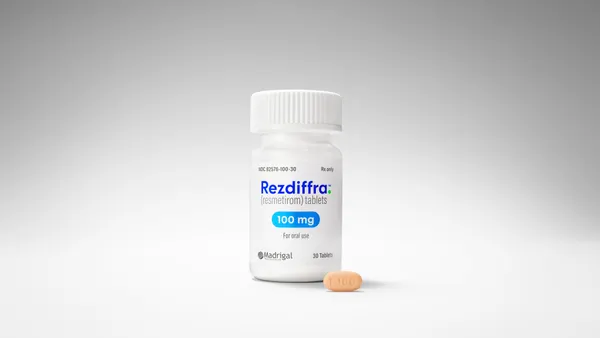Support Throughout the Life Cycle Michael Ball, Ph.D., Vice President, Marketing and Product Management Amy Weickert, Director of Marketing ith decreasing budgets, dwindling pipelines, and increasing regulatory and public scrutiny, pharmaceutical companies need to be more strategic than ever when marketing their brands. Large-scale launches followed by declining marketing investments run the risk of early market share attrition and pretty much guarantee failure to fully capitalize on the launch investment. To date, the prime goal, and the corresponding budgeting thrust, has been to drive patients to their doctor and then get the physician to initiate the first script. Both of these phenomena are measured (usually independently) by marketers and, when they are independently considered successful, combine to “move the needle" for the brand and grow market share. Somewhat less attention (i.e. less budget dollars) has been paid to nurturing brand confidence and loyalty in either patients or physicians. Physicians switching to generics or competitive drugs, as well as getting patients to stay on therapy, are significant challenges for most brand teams. In the cold hard light of today this approach just isn’t going to hack it. The combined program should continually build and leverage brand equity throughout all stages of the product life cycle, including disease state awareness, early experience programs, branded launch campaigns, market share growth initiatives and patient adherence programs. Solution Details Few strategies have been found to be as effective in this broad endeavor as patient feedback programs. Patient feedback can be applied at any point in a brand’s life cycle to increase prescribing levels and improve the communication between patients and their physicians. Patient feedback solutions close the loop between patients and their prescribing physicians by documenting and providing real-time data about patients’ experiences with and the efficacy of prescription drugs, medical devices and disease management programs. The founding premise of patient feedback programs is that doctors rarely hear the good news. On the rare occasions that they communicate with patients outside of scheduled office visits, it is generally related to a negative situation; either the drug is not working or a side effect has occurred and the patient is having an adverse reaction. This creates a fundamental asymmetry of information, which by its very nature slows the development of both the patient and the physician’s confidence in a new brand. Patient feedback restores the balance. A physician invites a patient to participate in a feedback program that provides treatment support for the patient and useful treatment feedback for the doctor. More than 93% of the doctors who participate in these programs report that the programs provide important new information about their patient and his/her treatment; 87% include program reports in their patients’ personal files and 92% consider discussing the report directly with the patient.* A Unique Approach Part of what distinguishes this approach from others is its unique ability to provide coverage for any brand challenge. Each product at each stage of its life cycle encounters unique challenges and unique opportunities. Summary One of the end goals of marketing across industries is to keep consumers loyal to a brand for the long-run, and pharma is no different in this regard. By supporting brands throughout their life cycle in a manner that raises the confidence levels of the prescribing physicians and their patients, pharma can help to ensure sustained brand loyalty in the face of economic and regulatory challenges. Pharma companies that employ a strategic and balanced marketing approach that intelligently invests through all stages of the product life cycle will ultimately win. n Note: Data from 2009 InfoMedics MD BRC responses InfoMedics, Inc. Meeting Challenges at Every Stage Life Cycle Challenge Patient Feedback – Unique Value Disease State Awareness Prepare for market and real world treatment paradigms, quantify unmet needs, raise awareness and build MD/Patient database Early Experience Wrap patient feedback around every prescription Branded Launch Campaign Integrate newly approved product messaging, patient tools/education, and sales detail pieces with individual product messages Growth Converting “dabblers". Changing physicians behavior through leveraging own patients experience Adherence Use customized patient behavior support to increase patient adherence InfoMedics, Inc. is a pharmaceutical services provider that delivers clear, actionable patient feedback to physicians; this feedback is designed to improve patient-physician communications while providing brand insight to pharmaceutical manufacturers. For more information, visit infomedics.com.
An article from


Support Throughout the Life Cycle
Filed Under:
Commercialization







